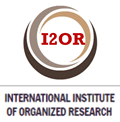Síndrome de Burnout en profesionales sanitarios en formación de un hospital público en Acapulco, México
Resumen
Introducción: El estrés ocupacional es uno de los problemas de salud asociados al trabajo con mayor prevalencia a nivel mundial el cual acarrea importantes costos económicos y sociales.
Objetivos: Identificar los factores asociados a Síndrome de Burnout y la severidad de afectación de sus dominios en personal de salud en formación.
Métodos: Se llevó a cabo un estudio transversal en 42 pasantes de enfermería e internos de medicina durante el mes de marzo de 2019. Previo consentimiento informado se recabó información sociodemográfica y laboral. Se aplicaron los instrumentos: Maslach Burnout Inventory y APGAR familiar.
Resultados: Entre los factores asociados positivamente a este fenómeno destacan: ser médico interno, condición de no residente, haber padecido algún evento vital, realizar labores domesticas después del trabajo, tiempo de traslado al hosptal ≥ 30 minutos, ≥100 horas de trabajo por semana, ≥26 pacientes por día. Vivir en el hogar familiar se asoció inversamente con Síndrome de Burnout.
Conclusiones: Atender la salud mental del personal en formación es esencial para su desarrollo profesional y el bienestar de la población usuaria.
Palabras clave
Referencias
Harolds J. Quality and Safety in Healthcare, Part LIV. Clinical Nuclear Medicine. 2019;45(1):46-48. DOI: https://doi.org/10.1097/RLU.0000000000002651
Tawfik D, Scheid A, Profit J, Shanafelt T, Trockel M, Adair K et al. Evidence Relating Health Care Provider Burnout and Quality of Care. Annals of Internal Medicine. 2019;171(8):555. DOI: https://doi.org/10.7326/M19-1152
World Health Organization. Burn-out an "occupational phenomenon": International Classification of Diseases. [Internet]. 2019. [Acceso 21/06/2022]. Disponible en: https://www.who.int/news/item/28-05-2019-burn-out-an-occupational-phenomenon-international-classification-of-diseases
World Health Organization. ICD-11 for Mortality and Morbidity Statistics: QD85 Burnout. [Internet]. 2022. [Acceso 21/06/2022]. Disponible en: https://icd.who.int/browse11/l-m/en#/http://id.who.int/icd/entity/129180281
Samra R. Brief history of burnout. BMJ. 2018;363:k5268. DOI: https://doi.org/10.1136/bmj.k5268
Ozturk Y. A theoretical review of burnout syndrome and perspectives on burnout models. Bussecon Review of Social Sciences (2687-2285). 2021;2(4):26-35. DOI: https://doi.org/10.36096/brss.v2i4.235
Rothenberger DA. Physician Burnout and Well-Being: A Systematic Review and Framework for Action. Dis Colon Rectum. 2017;60(6):567–76. DOI: https://doi.org/10.1097/DCR.0000000000000844
Frajerman A, Morvan Y, Krebs M, Gorwood P, Chaumette B. Burnout in medical students before residency: A systematic review and meta-analysis. European Psychiatry. 2019;55:36-42. DOI: https://doi.org/10.1016/j.eurpsy.2018.08.006
Shadid A, Shadid A M, Shadid A, et al. (January 12, 2020) Stress, Burnout, and Associated Risk Factors in Medical Students. Cureus 12(1): e6633. DOI: https://doi.org/10.7759/cureus.6633
Suleiman-Martos N, Albendín-García L, Gómez-Urquiza JL, Vargas-Román K, Ramirez-Baena L, Ortega-Campos E, De La Fuente-Solana EI. Prevalence and Predictors of Burnout in Midwives: A Systematic Review and Meta-Analysis. International Journal of Environmental Research and Public Health. 2020; 17(2):641. DOI: https://doi.org/10.3390/ijerph17020641
Ishak WW, Lederer S, Mandili C, Nikravesh R, Seligman L, Vasa M, et al. Burnout During Residency Training: A Literature Review. J Grad Med Educ [Internet]. 2009;1(2):236–42. DOI: https://doi.org/10.4300/JGME-D-09-00054.1
Jácome S, Villaquiran-Hurtado A, García C, Duque I. Prevalencia del síndrome de Burnout en residentes de especialidades médicas. Revista Cuidarte. 2018;10(1). DOI: https://doi.org/10.15649/cuidarte.v10i1.543
Lopes AR, Nihei OK. Burnout among nursing students: predictors and association with empathy and self-efficacy. Rev Bras Enferm. 2020;73(1):e20180280. DOI: https://doi.org/10.1590/0034-7167-2018-0280
Smith T, Hughes K, DeJoy D, Dyal M. Assessment of relationships between work stress, work-family conflict, burnout and firefighter safety behavior outcomes. Safety Science. 2018;103:287-292. DOI: https://doi.org/10.1016/j.ssci.2017.12.005
Bagherzadeh R, Taghizadeh Z, Mohammadi E, Kazemnejad A, Pourreza A, Ebadi A. Relationship of work-family conflict with burnout and marital satisfaction: cross-domain or source attribution relations?. Health Promotion Perspectives. 2016;6(1):31-36. DOI: https://doi.org/10.15171/hpp.2016.05
Acosta-Ramos S, Ramirez-Martinez F, Reveles Manriquez I, Galindo-Odilon M, Estrada-Esparza S, Trejo-Franco J et al. Burnout syndrome and association with work stress in nursing staff in public hospital of the northern border of Mexico. Archives of Psychiatric Nursing. 2021;35(6):571-576. DOI: https://doi.org/10.1016/j.apnu.2021.07.002
Clavelina-Gómez FJ, Ponce-Rosas ER. Una nueva propuesta para la interpretación de Family apgar (versión en español). Aten Fam. [Internet]. 2010;17(4). [Acceso 15/04/2022]. Disponible en: https://www.medigraphic.com/pdfs/atefam/af-2010/af104f.pdf
Maslach C, Jackson SE, Leiter MP. Maslach burnout inventory. Scarecrow Education; 1997.
Hariharan T, Griffin B. A review of the factors related to burnout at the early-career stage of medicine. Medical Teacher. 2019;41(12):1380-1391. DOI: https://doi.org/10.1080/0142159X.2019.1641189
González R, Bestard J, Blanco E, Elías R, Berenguer M, Aroche A. Las relaciones con el paciente en el marco institucional. Revista Cubana de Medicina. [Internet]. 2020;15(4). [Acceso 17/06/2022]. Disponible en: http://www.revmedicina.sld.cu/index.php/med/article/view/1024
Hashem Z, Zeinoun P. Self-Compassion Explains Less Burnout Among Healthcare Professionals. Mindfulness. 2020;11(11):2542-2551. DOI: https://doi.org/10.1007/s12671-020-01469-5
Guillén-Graf A, Flores-Villalba E, Díaz-Elizondo J, Garza-Serna U, López-Murga R, Aguilar-Abisad D et al. Incremento de síndrome de burnout en estudiantes de Medicina tras su primer mes de rotación clínica. Educación Médica. 2019;20(6):376-379. DOI: https://doi.org/10.1016/j.edumed.2018.09.003
Talih F, Daher M, Daou D, Ajaltouni J. Examining Burnout, Depression, and Attitudes Regarding Drug Use Among Lebanese Medical Students During the 4 Years of Medical School. Academic Psychiatry. 2018;42(2):288-296. DOI: https://doi.org/10.1007/s40596-017-0879-x
Hansell M, Ungerleider R, Brooks C, Knudson M, Kirk J, Ungerleider J. Temporal Trends in Medical Student Burnout. Family Medicine. 2019;51(5):399-404. DOI: https://doi.org/10.22454/FamMed.2019.270753
Uhlig-Reche H, Larson A, Silver J, Tenforde A, McQueen A, Verduzco-Gutierrez M. Investigation of work–life integration on burnout symptoms in women physician runners: a cross-sectional survey study. BMJ Open Sport & Exercise Medicine. 2021;7(1):e001028. DOI: https://doi.org/10.1136/bmjsem-2020-001028
Templeton K, Bernstein C, Sukhera J, Nora L, Newman C, Burstin H et al. Gender-Based Differences in Burnout: Issues Faced by Women Physicians. NAM Perspectives. 2019. DOI: https://doi.org/10.31478/201905a
García-Flores R, Zárate-Camargo N, Castillo-Cruz J, Acosta-Quiroz CO, Landa-Ramírez E. Estresores percibidos asociados a la presencia de burnout en médicos resi- dentes. Rev Med Inst Mex Seguro Soc. [Internet]. 2022;60(1):12-8. [Acceso 23/07/2022] Disponible en: http://revistamedica.imss.gob.mx/editorial/index.php/revista_medica/article/view/4175/4322
Palacios-Nava ME, Paz-Román MP. Diferencia en las condiciones de trabajo y su asociación con la frecuencia de burnout en médicos residentes y adjuntos. Med. segur. trab. [Internet]. 2019;65(255): 76-86. [Acceso 17/06/2022] Disponible en: https://scielo.isciii.es/pdf/mesetra/v65n255/0465-546X-mesetra-65-255-76.pdf
Enlaces refback
- No hay ningún enlace refback.




